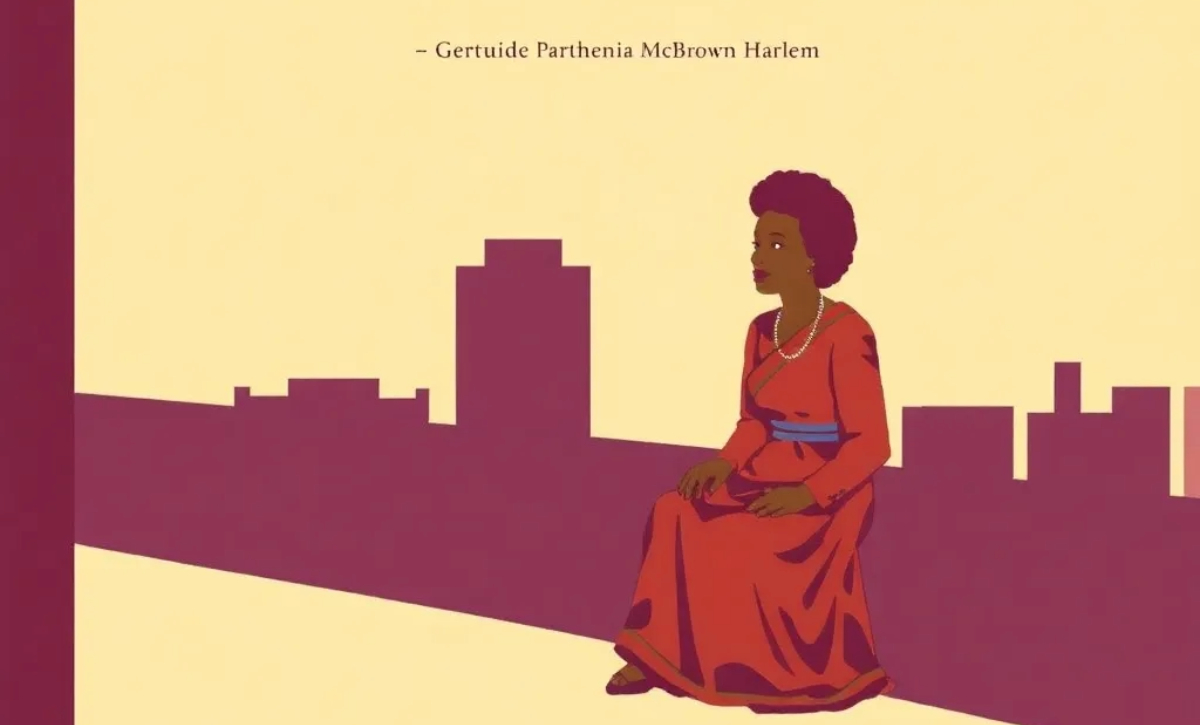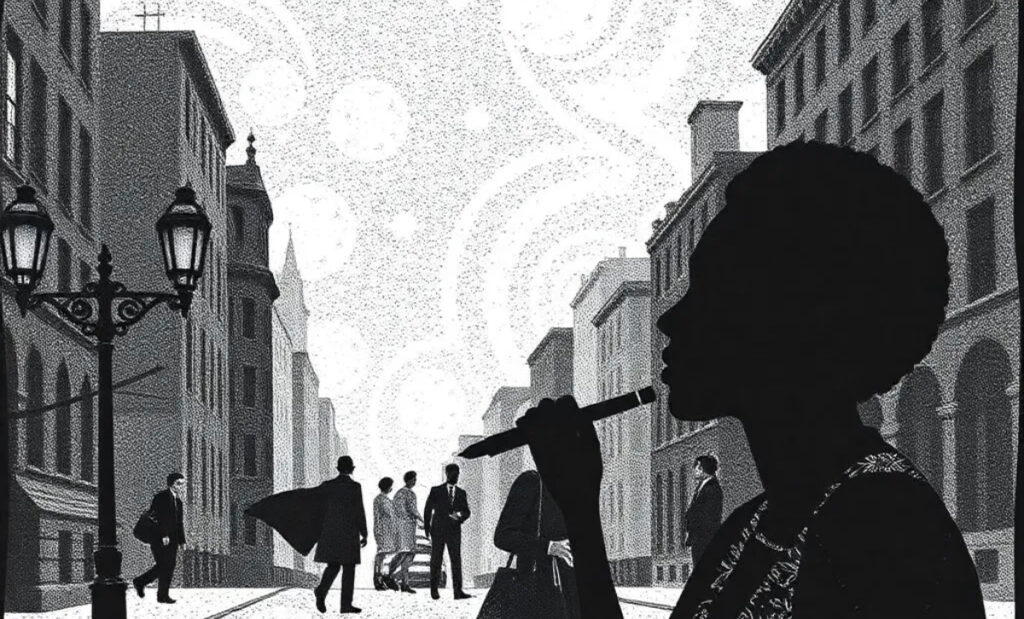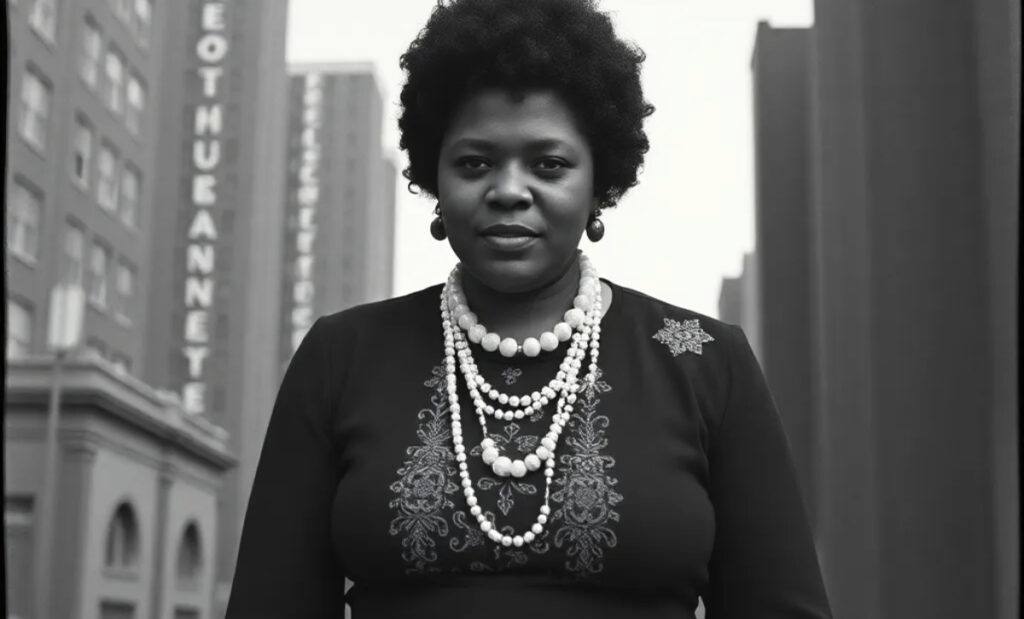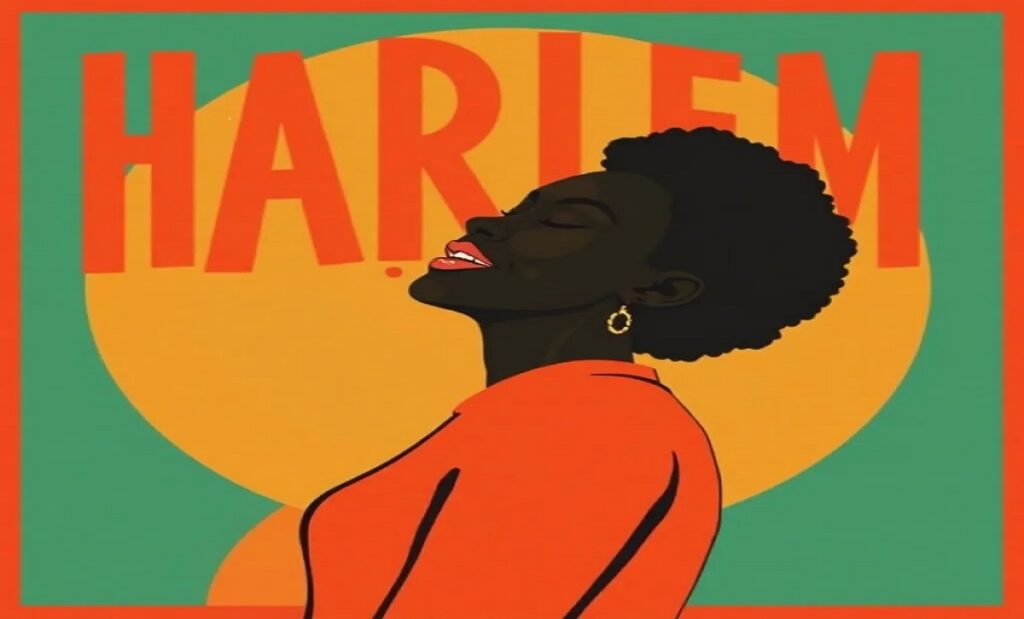Gertrude Parthenia McBrown Harlem: A Poet’s Journey Through the Renaissance

Introduction:
Gertrude Parthenia McBrown, a notable figure in Harlem’s vibrant cultural history, brought her unique voice to the Harlem Renaissance. Her work, characterized by creativity and an emphasis on African American identity, significantly impacted literature and children’s storytelling. As a poet and playwright, she skillfully intertwined themes of heritage and imagination, crafting a legacy that continues to inspire.
During the Harlem Renaissance, McBrown gained recognition for her contributions to the literary world, particularly through her Picture-Poetry Book. Illustrated by the renowned Loïs Mailou Jones, this collection showcased whimsical stories and images that resonated with children, reflecting their worlds while celebrating Black cultural identity. Her work is a testament to the transformative power of art during this groundbreaking era.
Who Was Gertrude Parthenia McBrown in Harlem’s Renaissance?
Gertrude Parthenia McBrown was not just a writer but an advocate for cultural pride. Living during the Harlem Renaissance, she used her talents to create stories that connected deeply with her audience. Her poetry and plays often highlighted themes of equality and self-expression.
During this time, Harlem became the center of Black art and literature. McBrown’s voice stood out because of her ability to blend traditional storytelling with new, vibrant ideas. She showed how creativity could be a tool for empowerment.
Her work also supported children’s literature. By writing stories that resonated with African American kids, she helped them see themselves in books. This impact is still felt today, as more authors and educators recognize the importance of diverse representation.
The Picture-Poetry Book: A Cultural Treasure
The Picture-Poetry Book by Gertrude Parthenia McBrown was a groundbreaking work. Released in the 1930s, it combined poetry with beautiful illustrations by Loïs Mailou Jones, a talented artist. This book stood out because it showed children of color in magical and everyday scenes, giving them a sense of belonging.
McBrown’s poems were simple yet powerful. They spoke about family, nature, and dreams, making them relatable to young readers. Each page encouraged children to imagine a better world where they could thrive and succeed.
This book was also a symbol of the Harlem Renaissance’s focus on education and cultural pride. By creating literature that celebrated African American identity, McBrown contributed to a growing movement of empowerment. Today, her work remains a source of inspiration for parents, teachers, and young readers alike.

Why Gertrude Parthenia McBrown’s Legacy Matters Today
Gertrude Parthenia McBrown’s work is more relevant now than ever. As society continues to focus on diversity and inclusion, her contributions remind us of the importance of representation. Through her poetry, she opened doors for future generations of writers and artists.
Her ability to connect with both children and adults set her apart. While many poets focused solely on adults, McBrown understood the power of reaching young minds. She encouraged children to dream big and to be proud of who they are.
By looking back at her achievements, we can see how art and literature can create change. McBrown’s work continues to teach us about resilience, creativity, and the beauty of heritage. Her story is a testament to how one person can make a difference through words.
Harlem Renaissance: Amplifying Voices Like McBrown’s
The Harlem Renaissance was a cultural explosion during the 1920s and 1930s, where African American writers, musicians, and artists showcased their creativity and heritage. Gertrude Parthenia McBrown was a key voice during this period, using her talents to inspire others. She contributed poetry, plays, and educational literature that reflected the strength of her community and encouraged pride in African American identity.
McBrown stood alongside other Harlem Renaissance icons like Langston Hughes and Zora Neale Hurston, yet her focus on children’s literature made her unique. Her work provided a space for young readers to see themselves in stories, a revolutionary idea at the time. By amplifying her voice, the Harlem Renaissance became a movement that celebrated both the present and future of African American culture.
This cultural era also gave women like McBrown a platform to shine. Her writings were not just personal expressions but tools for cultural empowerment. Her work continues to resonate today, reminding us of the importance of preserving and celebrating diverse stories.

Why Gertrude Parthenia McBrown’s Legacy Matters Today
Gertrude Parthenia McBrown’s legacy is timeless, showing us how art and literature can shape society. At a time when representation was scarce, she gave children and families stories that celebrated their culture and identity. This legacy is still important today as efforts to promote diversity in literature grow.
Her works, like the Picture-Poetry Book, addressed the need for inclusion. These stories inspired children to dream and showed them a world where they could succeed. Such themes remain vital, especially in modern conversations about equality and education.
By remembering McBrown, we honor the trailblazers of the past who paved the way for today’s creators. Her contributions remind us that representation in art and literature is more than just inclusion—it’s a celebration of identity.
The Role of Women Artists in the Harlem Renaissance
Women played a vital role in the Harlem Renaissance, bringing fresh perspectives to art, literature, and music. Gertrude Parthenia McBrown, among others, used her platform to highlight issues of race, identity, and empowerment. Through poetry and children’s stories, she contributed to the cultural richness of the movement.
Unlike many male counterparts, women like McBrown often focused on themes of community and heritage. Their art sought to educate and uplift future generations. McBrown’s partnership with illustrator Loïs Mailou Jones for the Picture-Poetry Book is a prime example of women working together to create meaningful art.
These women artists were pioneers, breaking barriers in fields dominated by men. Their contributions to the Harlem Renaissance were not only creative but also transformative, challenging stereotypes and opening doors for future generations.

Exploring McBrown’s Poetry Through Modern Eyes
Gertrude Parthenia McBrown’s poetry offers timeless lessons when viewed through modern eyes. Her work speaks of identity, resilience, and the beauty of African American culture. Though written decades ago, her words still resonate in a world striving for diversity and inclusion.
Her poems often celebrated everyday life, giving readers a glimpse into the lives of African American families. They encouraged pride in heritage while fostering imagination and creativity. For modern readers, her work highlights the importance of storytelling in building a more inclusive society.
Revisiting McBrown’s poetry today reminds us of the power of words to inspire change. Her legacy is a call to action for writers, educators, and artists to continue creating stories that reflect the beauty of all communities.
Conclusion
Gertrude Parthenia McBrown’s life and work remind us of the power of storytelling to bring people together and celebrate culture. During the Harlem Renaissance, she used her words to inspire pride and creativity in African American communities, especially for children. Her poems and plays taught young minds to dream, imagine, and value their heritage. By combining meaningful messages with simple, relatable themes, she created a body of work that still speaks to us today.
Her legacy is more than just her books and poetry—it is about the change she brought to how people viewed African American stories. McBrown showed the world that every voice matters, no matter how small or young. Today, her work inspires us to keep pushing for representation and diversity in art and education. Her story is a shining example of how creativity can build understanding and make the world a better place for everyone.
FAQs
Q: Who was Gertrude Parthenia McBrown?
A: Gertrude Parthenia McBrown was a poet, playwright, and educator during the Harlem Renaissance. She is known for her contributions to children’s literature and her efforts to celebrate African American culture through storytelling.
Q: What is the Harlem Renaissance?
A: The Harlem Renaissance was a cultural movement in the 1920s and 1930s that celebrated African American art, literature, music, and culture. It centered in Harlem, New York, and gave a platform to many Black artists, including Gertrude Parthenia McBrown.
Q: What is McBrown’s most famous work?
A: McBrown’s most famous work is the Picture-Poetry Book, a collection of poems for children, illustrated by Loïs Mailou Jones. It highlighted African American culture and inspired young readers to embrace their heritage.
Q: Why is Gertrude Parthenia McBrown important?
A: McBrown is important because she gave a voice to African American children through her literature. Her work during the Harlem Renaissance emphasized cultural pride, education, and creativity, leaving a lasting impact.
Q: How did McBrown contribute to children’s literature?
A: McBrown created stories and poems that celebrated African American identity. Her books, like Picture-Poetry Book, were among the first to feature children of color in empowering and relatable ways.
Q: What role did women play in the Harlem Renaissance?
A: Women like Gertrude Parthenia McBrown played vital roles in the Harlem Renaissance by creating art and literature that highlighted themes of identity, equality, and cultural pride, often focusing on the next generation.
Q: How is McBrown’s work relevant today?
A: McBrown’s work remains relevant because it promotes diversity, inclusion, and the importance of representation in art and literature. Her stories continue to inspire readers to celebrate their heritage and value cultural differences.






стоимость smm продвижения